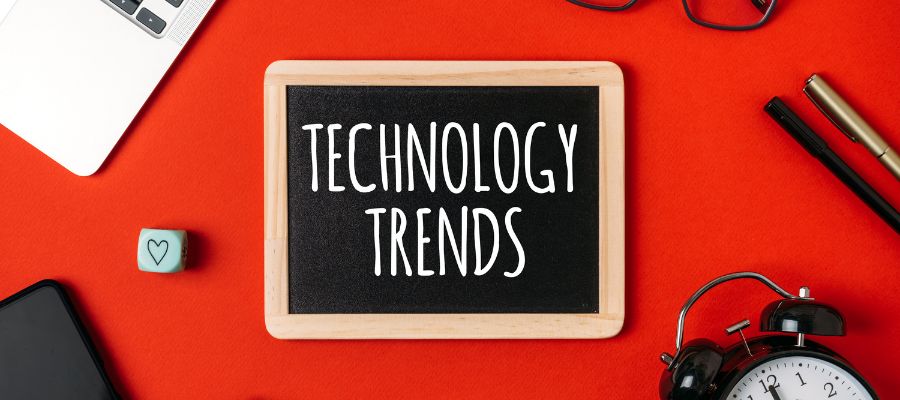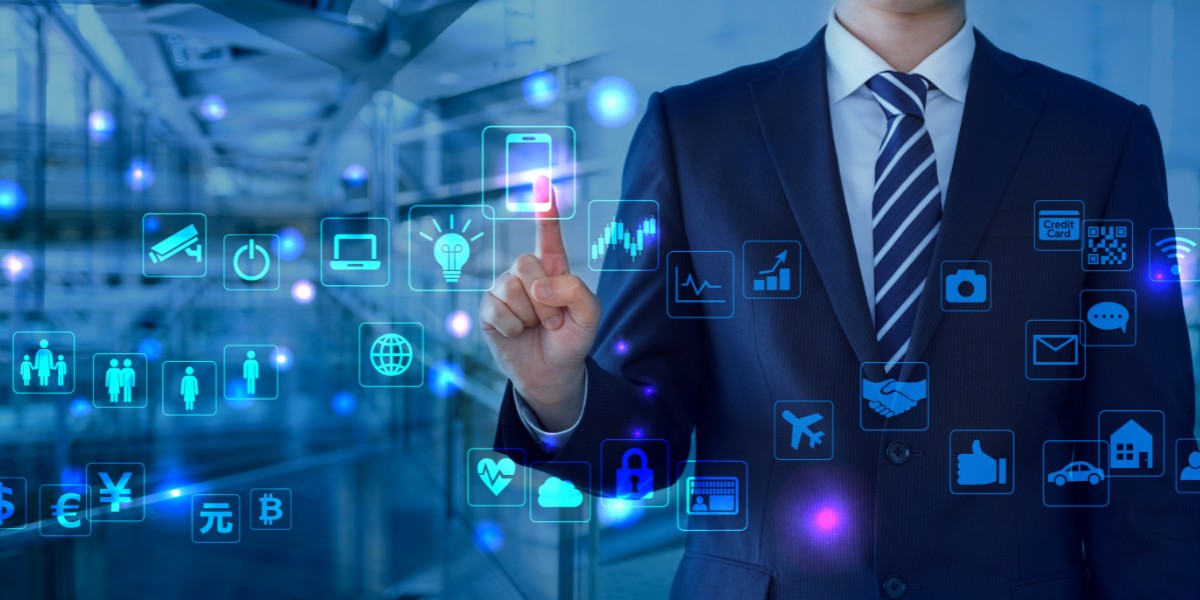Staying updated with the latest technological advancements is really important in today’s fast-paced world. This comprehensive guide will explore the top technology trends in 2023 and their impact on various industries.
For both individuals and businesses to be competitive in the increasingly digital world, understanding these trends is crucial.
The Top technology trends in 2023: Artificial Intelligence (AI)
Definition and Overview
The interesting field of artificial intelligence (AI) focuses upon creating smart machines that can do things that mostly perform by human.
It’s all about creating intelligent machines that can tackle tasks usually done by people. It’s all about building smart machines that can think like us!,
It has significant implications across various industries, from healthcare to customer experience. However, adopting AI also presents challenges such as ethical considerations and job displacement.

Applications and Innovations
- AI in Healthcare AI is revolutionizing the healthcare industry by enabling advanced diagnostics, accelerating drug discovery, and facilitating personalized medicine. It has the potential to improve patient care, optimize operational efficiency, and enhance treatment outcomes.
- AI in Customer Experience With AI-powered chatbots, virtual assistants, and personalized recommendation systems, businesses are enhancing customer service and engagement. AI enables companies to provide personalized experiences, automate routine tasks, and deliver targeted recommendations, thereby improving customer satisfaction.
- AI in Autonomous Systems Autonomous systems like self-driving cars, drones, and robotic systems are becoming increasingly sophisticated. AI plays a crucial role in powering these autonomous systems, offering benefits such as improved safety, efficiency, and productivity. However, challenges related to regulatory frameworks and ethical considerations must be addressed.
- II. Internet of Things (IoT)
A. Definition and Overview
The Internet of Things (IoT) is a network of linked devices that share data and engage in communication. It has gained significant importance in today’s connected world, enabling seamless integration between the physical and digital realms.- IoT devices have a profound impact on various industries, including smart homes, industrial settings, and healthcare.
B. Industry-specific Applications - Smart Homes IoT technologies enable automation and connectivity in homes, allowing users to control and monitor various devices remotely. Smart home appliances include advantages like higher energy efficiency, better security, and more convenience.
- Industrial IoT (IIoT) IIoT is transforming industries such as manufacturing, agriculture, and logistics by enabling real-time monitoring, predictive maintenance, and optimized resource utilization. It boosts operational effectiveness, lowers expenses, and makes data-driven decision-making possible.
- IoT in Healthcare IoT plays a crucial role in remote patient monitoring, wearable devices, and telemedicine.
- It makes it possible for medical professionals to gather real-time data, enhance patient outcomes, and provide individualized care.
- IoT devices also facilitate early detection and prevention of diseases.
- III. 5G and Next-Generation Connectivity
A. Introduction to 5G
In comparison to earlier generations, 5G networks provide much faster speeds, lower latency, and more capacity. They are the next generation of mobile connection. They have the potential to transform various industries and enable new applications and services.
B. Applications and Implications - Enhanced Mobile Experience With 5G, users can enjoy faster download speeds, seamless streaming of high-quality content, and immersive augmented reality (AR) experiences. It creates new opportunities for virtual reality (VR) applications, video streaming, and mobile gaming.
- Internet of Things (IoT) Connectivity 5G networks provide the necessary infrastructure for widespread adoption of IoT devices. This enables seamless connectivity and communication between IoT devices, supporting the development of smart cities, autonomous vehicles, and industrial automation.
- IV. Cybersecurity and Data Privacy
- A. Growing Importance of Cybersecurity
As technology advances, the threat landscape continues to grow, making robust cybersecurity measures crucial. Sensitive data and digital assets must be protected, so businesses and individuals alike need to be aware of potential cyber dangers and take the necessary precautions.
B. Emerging Technologies in Cybersecurity - AI-Powered Security AI is increasingly used in cybersecurity to detect and respond to cyber threats in real-time. It enhances threat intelligence, automates security operations, and enables proactive defense mechanisms.
- Blockchain for Data Security Blockchain technology offers a decentralized and tamper-resistant approach to data security. It has applications in finance, supply chain management, and identity management, providing enhanced data privacy and integrity.
- V. Edge Computing
- A. Definition and Overview
Edge computing refers to the practice of processing data closer to its source rather than relying solely on centralized cloud infrastructure. It addresses the limitations of traditional cloud computing, such as latency and bandwidth constraints.
B. Benefits and Use Cases - Reduced Latency and Improved Performance Edge computing enables faster response times and real-time data processing by bringing computation closer to the edge devices. It offers benefits in applications like autonomous vehicles, remote monitoring, and edge AI.
- Data Privacy and Bandwidth Optimization By processing data locally, edge computing addresses data privacy concerns associated with transmitting sensitive information to the cloud. It also optimizes bandwidth usage and reduces reliance on cloud infrastructure.
- VIII. Augmented Reality (AR) and Virtual Reality (VR)
- A. Introduction to AR and VR
Virtual reality and augmented reality are immersive technologies that improve user experience by fusing the real and virtual worlds. These technologies have seen growing adoption across various industries.
B. Applications and Experiences - AR in Retail and E-commerce AR enhances the shopping experience by allowing virtual try-ons, product visualizations, and personalized recommendations. It has the potential to improve customer engagement, increase sales, and reduce returns.
- VR in Gaming and Entertainment VR gaming has advanced significantly, offering immersive and realistic experiences. It has transformed the gaming industry and opened up opportunities for virtual entertainment experiences like virtual concerts and virtual tourism.
- AR and VR in Training and Education AR and VR are revolutionizing training and education by providing immersive, interactive, and realistic simulations. They allow learners to practice in safe environments and enhance knowledge retention through experiential learning.
- IX. Quantum Computing
- A. Introduction to Quantum Computing
In the cutting-edge field of quantum computing, complicated computations are carried out using the concepts of quantum physics. It has the potential to revolutionize computing power and solve problems that are intractable for classical computers.
B. Applications and Implications - Advancements in Cryptography Quantum computing can potentially break traditional encryption algorithms, highlighting the need for quantum-resistant encryption methods. It has implications for encryption, cybersecurity, and data protection.
- Optimizing Complex Systems Quantum computing has the potential to solve complex optimization problems more efficiently. It can find optimal solutions for logistical challenges, financial modeling, and drug discovery, among other applications.
- X. Automation and Robotics
- A. Overview of Automation and Robotics
Automation and robotics are increasingly playing a significant role in various industries, transforming processes and augmenting human capabilities. However, their adoption also raises questions about job displacement and ethical considerations.
Conclusion
We have explored the most important Technology trends in, 2023 in great detail in this detailed guide. These include automation and robotics, artificial intelligence (AI), the Internet of Things (IoT), 5G connectivity, cybersecurity, edge computing, augmented reality (AR), virtual reality (VR), quantum computing, and sustainable technology solutions.
It is crucial for both individuals and organizations to stay informed about these trends as they transform industries and open up new opportunities.
Accept these developments and make use of their potential to advance both your professional and personal lives in the increasingly digital world.

